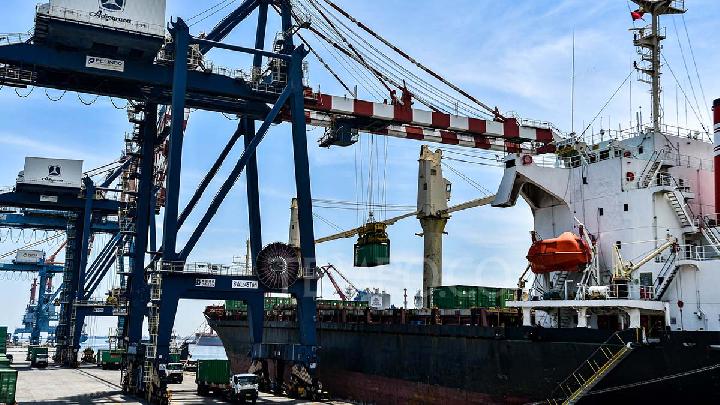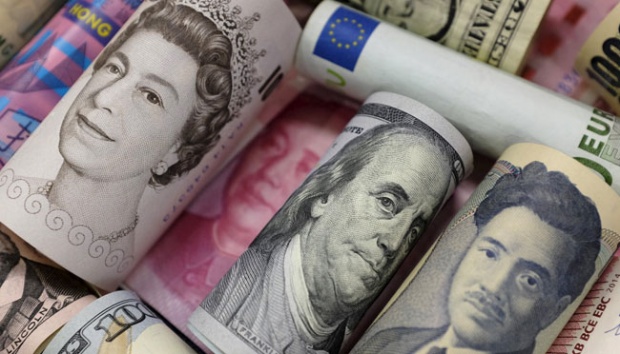TEMPO.CO, Jakarta - Beneath Europe’s well-celebrated quaint cobblestone streets and iconic landmarks lies a powerful economic landscape. These nations have played a vital role in driving the continent’s financial power, as measured by GDP per capita (PPP) in 2025.
Taking center stage, Luxembourg is the richest country in Europe, with a projected GDP per capita of $152,915. Its economic strength stems from a highly developed financial sector, a flexible economic model, and a strategic location, all allowing Luxembourg to continually push the boundaries of what is possible in innovation and prosperity.
So, which other countries follow closely behind? Here's the top 10 list of the richest countries in Europe, according to WorldAtlas.
10 Richest Countries in Europe
1. Luxembourg | GDP per capita (PPP): $152,915
Topping the list, Luxembourg is recognized as the richest country in Europe, with a GDP per capita (PPP) of $152,915. Though historically reliant on steel, Luxembourg has successfully transitioned into a financial powerhouse.
Despite having a population of fewer than 700,000 people, Luxembourg has become an attractive destination for global businesses looking to benefit from its unique economic structure and favorable tax policies. To name a few, giants like Google and Amazon have established a significant presence in the country.
2. Ireland | GDP per capita (PPP): $134,000
Ireland's economic boom will continue into 2025, fueled by its favorable tax regime and openness to the global market. Once Western Europe’s poorest, the Irish economy has developed to the point that it has become appealing for multinational companies, especially from the U.S. Its thriving economy is evident in its robust high-tech industries, including financial services, software, pharmaceuticals, and agriculture.
3. Norway | GDP per capita (PPP): $107,892
Norway is cited as the third richest country in Europe, with a GDP per capita of $107,892 (PPP). Its wealth is largely fueled by abundant natural resources, especially oil and gas, but the country has worked strategically to diversify its economy.
Beyond energy exports, Norway excels in hydropower, maritime, and fisheries industries, while also investing heavily in sustainable energy initiatives. Known for its robust social welfare system and high quality of life, Norway also consistently ranks among the best countries to live in.
4. Switzerland | GDP per capita (PPP): $97,581
Innovation plays a central role in Switzerland’s wealth, contributing to its GDP per capita (PPP) of $97,581. The country is renowned for its strong presence in high-value industries such as pharmaceuticals, chemicals, machinery, as well as banking and finance.
This robust economic foundation has made Switzerland a magnet for wealthy individuals and global investors. Expatica reports that Switzerland is home to an astonishing 1.7% of the world’s wealthiest individuals, despite accounting for only 0.1% of the global population.
5. Denmark | GDP per capita (PPP): $88,934
A top contender among the happiest countries in the world, Denmark also stands out for its prosperity in Europe. With a GDP per capita (PPP) of $88,934, Denmark may lack abundant natural resources, but it excels in its robust service sector.
Supported by sustainable fiscal policies and efficient governance, the country is not only attractive to global businesses but also highly regarded by its citizens. Danes see taxes as a worthwhile investment. The country's well-developed social welfare system is evident in its strong education, healthcare, and childcare services.
6. Netherlands | GDP per capita (PPP): $84,566
With a GDP per capita (PPP) of $84,566, the Netherlands benefits from its strategic location, robust infrastructure, and diversified economy. Playing a major role in logistics and commerce, the Dutch economy owes much to the Port of Rotterdam, which remains the largest seaport in Europe. In addition to that, the Netherlands’ economic landscape is defined by its high productivity and consistently low unemployment rate.
7. San Marino | GDP per capita (PPP): $83,031
Despite being one of the smallest countries in the world, San Marino’s economic strength is not to be underestimated. Driven by tourism, manufacturing, and banking, this landlocked microstate within Italy has built a robust economy that supports a high standard of living. However, according to WorldAtlas, San Marino has faced economic vulnerabilities, particularly due to its reliance on external demand and a systemic banking crisis.
8. Iceland | GDP per capita (PPP): $81,215
The 2008 financial crisis significantly impacted Iceland’s economy, causing the collapse of its banking sector and leading to widespread financial instability. However, the country made a relatively rapid recovery, thanks to bold policy decisions, banking reforms, and a flexible monetary system. Today, Iceland’s economy is largely supported by its strengths in renewable energy, tourism, and the fishing industry.
9. Malta | GDP per capita (PPP): $76,705
Though it experienced a significant decline of 8.2 percent in 2020, Malta’s GDP rebounded with growth of 5.9 percent in 2021. Its open market economy, driven by tourism, foreign trade, and manufacturing, is further enhanced by low corporate taxes, making it a favorable location for global enterprises. Furthermore, Malta has long been regarded as a haven for the ultra-wealthy seeking second residency.
10. Belgium | GDP per capita (PPP): $75,846
Rounding out the list, Belgium is the tenth richest country in Europe. With a GDP per capita (PPP) of $75,846, the nation boasts an open economy supported by efficient ports and strong specializations in high-tech and biopharmaceutical industries.
Despite lacking abundant natural resources, Belgium has leveraged its strategic location at the heart of Europe to become a key international trade hub. Major drivers of its economy include finance, telecommunications, and logistics.
From the ultra-wealthy Luxembourg to economically diverse Belgium, these top 10 richest countries in Europe reveal how economic strength extends beyond size. Instead, it’s driven by smart economic policies, high productivity, and strong social safety nets.
Editor's Choice: What Is Jerome Powell's Net Worth in 2025? Inside the Wealth of the Fed Chair
Click here to get the latest news updates from Tempo on Google News


















































